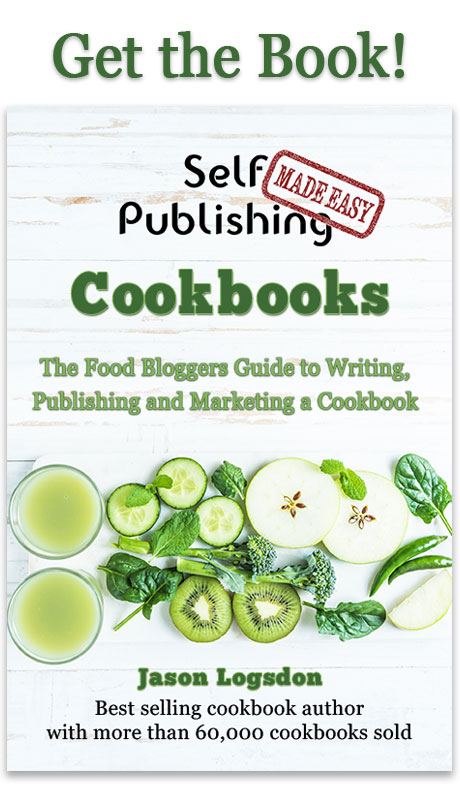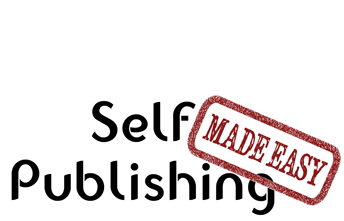Existing Users Sign In

Publishing Master Course Outline
- Self Publishing Master Course Introduction
- Before You Get Started
- Overview of the Publishing Process
- Determining Your Cookbook Goals
- Determine Type of Cookbook
- Consider a Sample Book
- Determine Book Subject
- What Makes a Good Cookbook Subject
- Brainstorming Cookbook Subjects
- Determine the Competition In a Cookbook Subject
- Finding Complementary and Competitive Products
- How to Generate a List of Keyword for Your Cookbook Subject
- Competitive Breakdown of an Amazon Sales Category
- Finally Choosing Your Cookbook Subject
- Research Cookbook Subject
- Choosing Your Avatars
- Researching the Cookbook Subject
- Researching Material for Your Cookbook
- Outlining and Notetaking Tools
- Write Cookbook and Recipes
- Keys to a Well Written Book
- Components to a Recipe
- Recipe Layouts
- Recipe Attribution
- Book Writing Tools
- How to Back Up Your Cookbook Files
- Photograph and Test Recipes
- How to Test Cookbook Recipes
- Food Photography Tips
- Proofread and Edit Cookbook
- Types of Cookbook Editing
- Tips for Self Editing Your Cookbook
- Finding Outside Editing Help
- Proofreading and Editing Resources
- Publishing Formats
- Types of Cookbook Publishing Formats
- Choosing a Self Publishing Printer
- Comparison of Print on Demand Cookbook Printers
- CreateSpace Cookbook Publishing Review
- IngramSpark Cookbook Publishing Review
- Ebook Publishers and Distributors
- Design Cookbook
- Cookbook Design and Formatting Guidelines
- Choosing A Great Cookbook Title
- How to Design a Cookbook Cover
- What Fonts to Use in Your Cookbook
- Cookbook Front Matter
- Cookbook Back Matter
- In-Book Marketing
- How to Design an eBook
- How to Create an ePub File
- Previewing and Testing eBooks
- Finding Outside Design Help
- Publish Cookbook
- How to Price Your Cookbook
- How to Write a Selling Book Description
- Determining Your Amazon Categories
- Choosing Publishing Keywords
- How to Publish on Amazon With CreateSpace
- How to Publish an eBook
- How to Publish On the Kindle
- How to Publish on the Nook
- How to Publish on iTunes
- How to Publish Your Book Through Smashwords
- How to Create and Sell a PDF on Your Blog
- Wholesaling Cookbook
- Methods of Cookbook Wholesaling
- Where to Wholesale Your Cookbook
- Developing a Wholesaling Line Sheet
- Promote Cookbook
- How to Launch Your Cookbook Successfully
- Getting Amazon Reviews
- Newsletter Promotions
- Free Content and Previews on Your Blog
- How to Get Blogs to Write About Your Cookbook
- General Articles
- All About ISBN Numbers
- How Do Cookbook Royalties Work?
- Financing Your Self Published Cookbook
- What is the Amazon Sales Rank?
- Cookbook Writing Resources
- Understanding Book Margins
- PDF Self Publishing FAQs
- How to Poll Your Blog Readers
- What is DRM
- Great Books to Learn About Food and Recipe Writing
- KDP Select - What Is It and Is It Worth it?
- Cookbook Design Programs
- Amazon Top Cookbook Reviewers
- Should You Publish Your ebook Directly or Use a Distributor
- Case Studies
- Sales Channel Revenue Breakdown with Modernist Cooking Made Easy
- Cookbook Writing and Marketing Templates
- Recipe Testing Worksheet Templates
- Review Requests Templates
- Cookbook Newsletter Promotion Templates
- Cookbook Manuscript Templates
Existing users please sign in to continue reading this article.
Welcome to Self Publishing Made Easy!
Publishing a Cookbook can be
Challenging
We will make the process clear and easy, allowing you to focus on creating a remarkable cookbook without any distractions.
Easily Navigate The Publishing Process
Benefit From a Community of Other Self Publishers
Maximize Your Distribution and Profit
We are the leading cookbook self publishing member site on the internet and are here to help you navigate the sometimes tricky path of self publishing. We provide step by step guidance to publishing your own cookbook as well as access to our active and helpful community of self publishers.
Or Get More Information about Self Publishing Made Easy
Disclosure : Some of the links in this post are affiliate links so if you click on the link and purchase the item, I will receive a commission.
Food Photography Tips
Click here to get great self publishing content via emailTaking photographs for a book is very similar to taking them for a blog. As a food blogger, you probably already have a good idea of how to take great photographs. If you need a refresher, here are some important tips for food photography, as well as links to more information.
Use the Highest Resolution Possible

Photos for a blog are normally used at 72 dpi which gives you a lot of leeway with resizing, cropping, and zooming using almost any type of camera. Photos used in print books are printed at 300 dpi, severely limiting the amount of cropping and resizing you can do, especially when taken with a lower resolution camera.
There is still some leeway with resizing and cropping but it is much more critical to accurately frame your photograph from the start. It is also helpful to use the highest resolution camera you have access to.
Use Good Lighting
Good lighting is critical to producing great photos. Natural light is a wonderful way to go if you have access to it. A box light, or stand lights are also very helpful. Never use the flash on your camera, it will result in washed out photographs.
Once I got serious about taking good photographs (and I was starting to do videos as well) I wanted some high-quality lights. I ended up getting the Fancierstudio Softbox Lighting Kit which comes with 3 stand lights. These lights don't get hot and are very versatile. They've met all my photography and most of my video needs, which is pretty impressive since they cost less than $150.
Using bounce boards is also a great habit to develop. These reflectors are set up at the opposite side of the food and bounce the light back, filling in shadows and rounding out the photos. A piece of foam board you can get for a few bucks at any craft store can be used as an inexpensive bounce board.
Take Many Shots at Multiple Angles
Don't limit yourself to only a few angles because there are often many compelling shots you might miss out on.


It's best to start with the normal angles of an above shot, a straight front shot, and a 3/4 or 45° shot. That way you know you have at least a few usable photos. From there you can start to take more unusual pictures that might not work out such as different cropped views, using harsher or softer lighting, and more or less zoomed in. You can also experiment with the depth of field and compositions with less usual exposures.
Taking several shots will not only give you a wide variety of shots to choose from, it will also give you great practice and teach you what works and doesn't work.
Stabilize Your Camera
When using proper lighting you will need to have the shutter open for a longer amount of time. This makes it very hard to hold the camera steady. Using a tripod or another stabilizing device is key to producing crisp photographs.
For most of my normal shots I use the Ravelli APLT2 50" Tripod and it works great. Plus, for under $20 it's a great deal for a solid piece of equipment. When I'm taking photos with my phone, I use the SnapMount SM3 Tripod Mount, which allows my phone to go on a normal tripod.
Recently, I wanted more stability for my overhead shots so I splurged and got a combination of the Manfrotto MT055XPRO3 Pro Tripod and Side Arm, these help me produce super-crisp shots from above.
Touch Up Your Photos

Don't be scared to touch up, re-balance, and crop your photos on your computer. While some professional photographers might look down on this practice, most photographers can produce much, much better photos when they are touched up.
Adobe Photoshop or Adobe Lightroom are the top two photo editing programs. These programs, especially Photoshop, used to be very expensive but they are now available as a subscription for only $10 to $20 a month, less than most web hosting. If you are serious about producing high quality work then their ability to transform your photographs is worth the monthly investment. You can also explore the other photo editing programs
Shoot in RAW format
To take full advantage of many of Lightroom, Photoshop, and the other editing programs it's best to shoot in RAW format. This format stores much more information than the standard JPG format and allows you to change many aspects of your image using simple sliders.
Photography Resources
Detailed food photography is beyond the scope of this article but here are some books we highly recommend if you are looking for more help with your photography. Plate to Pixel: Digital Food Photography & Styling, Food Photography: From Snapshots to Great Shots, and Focus on Food Photography for Bloggers all provide great overviews of food photography that will work for both bloggers and publishers.
For a general look at photography we recommend Understanding Exposure: How to Shoot Great Photographs with Any Camera.
If you need help with your food styling, Food Styling: The Art of Preparing Food for the Camera and The Food Stylist's Handbook both provide great information.


